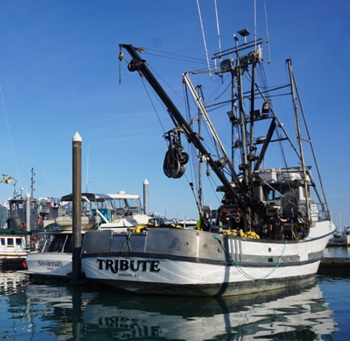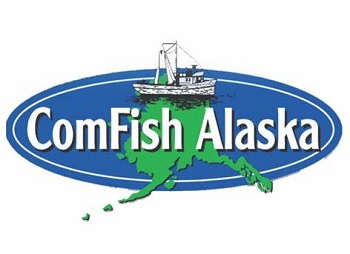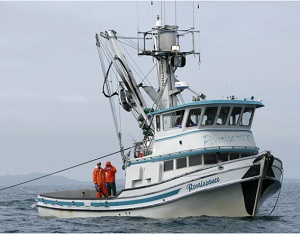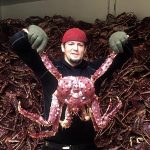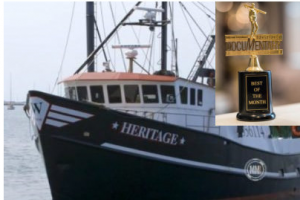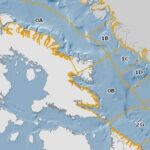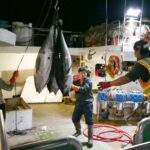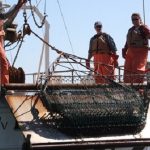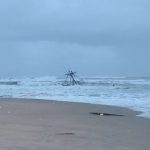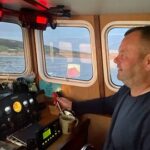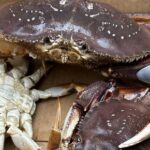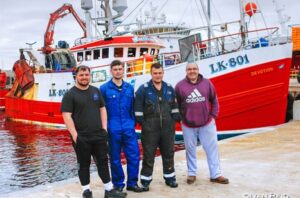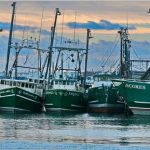Tag Archives: Alaska Seafood Marketing Institute
Legislative task force offers possible actions to rescue troubled Alaska seafood industry
 Alaska lawmakers from fishing-dependent communities say they have ideas for ways to rescue the state’s beleaguered seafood industry, with a series of bills likely to follow. Members of a legislative task force created last spring now have draft recommendations that range from the international level, where they say marketing of Alaska fish can be much more robust, to the hyper-local level, where projects like shared community cold-storage facilities can cut costs. The draft was reviewed at a two-day hearing in Anchorage Thursday and Friday of the Joint Legislative Task Force Evaluating Alaska’s Seafood Industry. It will be refined in the coming days, members said. The bill that created the task force, Senate Concurrent Resolution 10, sets a deadline for a report to the full Legislature of Jan. 21, which is the scheduled first day of the session. However, a final task force report may take a little longer and be submitted as late as Feb. 1, said Senate President Gary Stevens, R-Kodiak, the group’s chair. Photos, links, more, >>CLICK TO READ<< 10:44
Alaska lawmakers from fishing-dependent communities say they have ideas for ways to rescue the state’s beleaguered seafood industry, with a series of bills likely to follow. Members of a legislative task force created last spring now have draft recommendations that range from the international level, where they say marketing of Alaska fish can be much more robust, to the hyper-local level, where projects like shared community cold-storage facilities can cut costs. The draft was reviewed at a two-day hearing in Anchorage Thursday and Friday of the Joint Legislative Task Force Evaluating Alaska’s Seafood Industry. It will be refined in the coming days, members said. The bill that created the task force, Senate Concurrent Resolution 10, sets a deadline for a report to the full Legislature of Jan. 21, which is the scheduled first day of the session. However, a final task force report may take a little longer and be submitted as late as Feb. 1, said Senate President Gary Stevens, R-Kodiak, the group’s chair. Photos, links, more, >>CLICK TO READ<< 10:44
Dire condition of Alaska’s seafood industry has many causes and no easy fixes, experts say
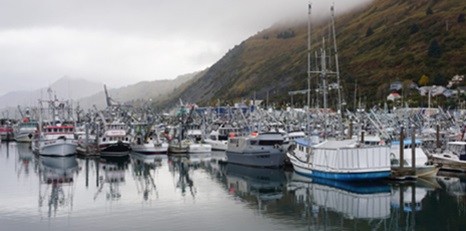 State officials and industry leaders trying to rescue the ailing Alaska seafood industry are facing daunting challenges, recently released numbers show. The industry lost $1.8 billion last year, the result of low prices, closed harvests and other problems, according to the National Oceanic and Atmospheric Administration. State Rep. Bryce Edgmon, I-Dillingham, part of a task force charged with making recommendations on ways that lawmakers can help rescue the industry, said the solutions will be difficult and will require the full attention of his colleagues next year. Joe Bundrant, chief executive officer of Trident Seafoods, described how Russian fish production is part of a “perfect storm” of low prices, devaluation of Alaska’s product and a geopolitical landscape “like I’ve never seen anything close to it.” more, >>CLICK TO READ<< 14:36
State officials and industry leaders trying to rescue the ailing Alaska seafood industry are facing daunting challenges, recently released numbers show. The industry lost $1.8 billion last year, the result of low prices, closed harvests and other problems, according to the National Oceanic and Atmospheric Administration. State Rep. Bryce Edgmon, I-Dillingham, part of a task force charged with making recommendations on ways that lawmakers can help rescue the industry, said the solutions will be difficult and will require the full attention of his colleagues next year. Joe Bundrant, chief executive officer of Trident Seafoods, described how Russian fish production is part of a “perfect storm” of low prices, devaluation of Alaska’s product and a geopolitical landscape “like I’ve never seen anything close to it.” more, >>CLICK TO READ<< 14:36

PWS, Cook Inlet sockeye catch exceeded harvest projections
As the sockeye salmon harvest season comes to a close, only Bristol Bay, Prince William Sound and Cook Inlet surpassed their pre-season predictions, with harvests of 31.1 million, 3.1 million and 2 million reds respectively. Cook Inlet and Prince William Sound were also the only two regions to show year-over-year growth and exceeding harvest projections, says Simon Marks, a research analyst for McKinley Research Group in Juneau, who writes the weekly in-season commercial wild Alaska salmon report on behalf of the Alaska Seafood Marketing Institute. While Bristol Bay has already surpassed the pre-season sockeye prediction by 19%, year-to-date harvest remains 23% behind 2023, Marks said on Aug. 27. Initial predictions for the 2025 season indicate an expected harvest of 32.4 million fish, a 2.8% gain if realized. more, >>CLICK TO READ<< 16:26
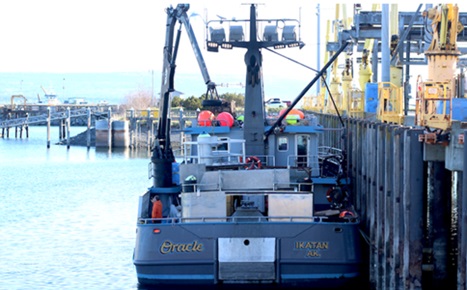
As salmon season kicks off, some Alaska fishermen fear for their futures
On a brilliant spring morning, Buck Laukitis, a longtime fisherman from this Kenai Peninsula town, stood at the city dock watching his catch come ashore. Crew members aboard Laukitis’ boat, the Oracle, filled bags with dozens of halibut — some of the fatter ones worth $200 or more — which a crane would lift up to the dock. There, processing workers on a small slime line weighed the fish, tossed crushed ice into the gills and slid them into boxes for shipment to Canada. Harvest, unload, sell, repeat — exactly how the iconic Alaska commercial fishing industry is supposed to work. Until you ask Laukitis about the Oracle’s sister vessel, the Halcyon. Instead of fishing for another species, black cod, like it’s built for, the Halcyon is tied up at the dock. For Laukitis to make money, processing companies would need to pay $2.50 for each pound of black cod delivered to a plant. But right now, buyers aren’t paying much more than $1.50, he said. With Laukitis on the dock last month were his young grandkids and adult daughters — fishermen who run a popular brand called the Salmon Sisters. Photos, more, >>CLICK TO READ<< 12:40
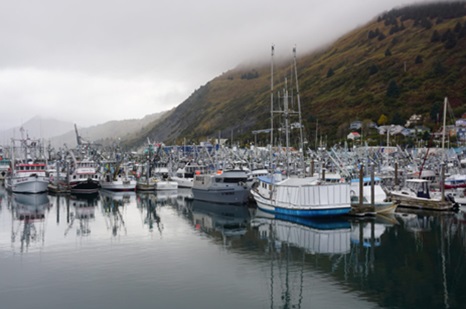
Report portrays mixed picture of Alaska’s huge seafood industry
The report from the McKinley Research Group, titled The Economic Value of Alaska’s Seafood Industry, is the latest in a periodic series commissioned by the Alaska Seafood Marketing Institute. The total economic value of the Alaska seafood industry in 2021 and 2022 was $6 billion, slightly more than the $5.6 billion tallied in 2019, the last full year prior to the COVID-19 pandemic, according to the new report and the previous version published in 2022. Along with that good news, the McKinley Research Group’s report contains a warning about the industry’s economic future. The seafood industry, between harvesters, processors and managers, accounted for 48,000 jobs on average in 2021 and 2022, equivalent to 29,100 full-time positions, the report said. That is a reduction from the 62,200 total jobs in 2019, the equivalent of 37,400 full-time positions. more, >>CLICK TO READ<< 11:21
Alaska delusions – The great takeover of federal waters
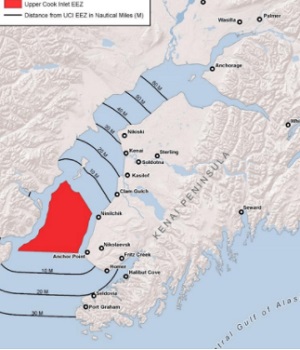 Oh if only the facts were as a trio of Alaska House legislators would like their colleagues to believe. They’ve drafted a resolution calling on Congress to extend state waters to 15 miles off the coast of Alaska because this would serve the state’s interest in supporting a “seafood industry generat(ing) over $163,000,000 in revenue for state and local governments.” All those zeros make that look like a great deal of money, but in terms of state revenue, $163 million is chicken feed. The state’s now fading oil industry is forecast to produce $3 billion in fiscal year 2024 or almost 20 times more, according to state projections. Worse though, the claim to $163 million in state revenue from the fishing industry comes from a report compiled for the Alaska Seafood Marketing Institute (ASMI) that is badly outdated, and the resolution now based on that report lacks the context which even the seafood sales promotion organization felt compelled to add. more, >>CLICK TO READ<< 08:56
Oh if only the facts were as a trio of Alaska House legislators would like their colleagues to believe. They’ve drafted a resolution calling on Congress to extend state waters to 15 miles off the coast of Alaska because this would serve the state’s interest in supporting a “seafood industry generat(ing) over $163,000,000 in revenue for state and local governments.” All those zeros make that look like a great deal of money, but in terms of state revenue, $163 million is chicken feed. The state’s now fading oil industry is forecast to produce $3 billion in fiscal year 2024 or almost 20 times more, according to state projections. Worse though, the claim to $163 million in state revenue from the fishing industry comes from a report compiled for the Alaska Seafood Marketing Institute (ASMI) that is badly outdated, and the resolution now based on that report lacks the context which even the seafood sales promotion organization felt compelled to add. more, >>CLICK TO READ<< 08:56
Economists unsure of how long huge salmon influxes will affect prices
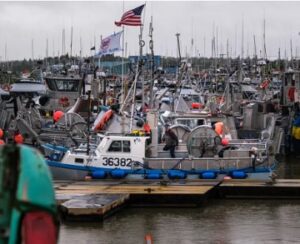 Kodiak fisherman Mike Friccero has fished for salmon for over four decades. He said he was expecting a low price for Bristol Bay salmon this summer but didn’t think rumors were true about how low it would drop. “Our processor gave us a letter, a narrative before the season started, saying that pricing conditions weren’t great but that they were going to go after it with all the resources that they utilized last year as far as tendering and logistics and resources in general,” he said. “And they asked if we would do the same.” Friccero said with lower salmon prices, he’s able to keep a decent paycheck but will have to be wary of his budget for next year. He said he hopes market conditions improve over the winter. >click to read< 11:27
Kodiak fisherman Mike Friccero has fished for salmon for over four decades. He said he was expecting a low price for Bristol Bay salmon this summer but didn’t think rumors were true about how low it would drop. “Our processor gave us a letter, a narrative before the season started, saying that pricing conditions weren’t great but that they were going to go after it with all the resources that they utilized last year as far as tendering and logistics and resources in general,” he said. “And they asked if we would do the same.” Friccero said with lower salmon prices, he’s able to keep a decent paycheck but will have to be wary of his budget for next year. He said he hopes market conditions improve over the winter. >click to read< 11:27
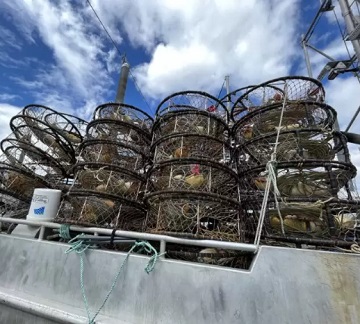
Southeast Dungeness fishery opens to low prices
Two days before crabbing started, Petersburg fisherman Paul Menish was in the cabin of his boat, the “Hi Nikki,” speculating on crab prices. “Sounds like prices aren’t going to be as low as we were quoted three weeks ago,” said Menish. “Now, it’s just rumors, but that the prices will be for Dungeness, will be in north at two dollars. Which isn’t a good price but better than three weeks ago.” It turns out Menish was right. When he sold his first load to OBI Seafoods in Petersburg, he said he got $2.10 a pound. That’s fifty cents lower than the starting price last summer. >click to read< 10:15
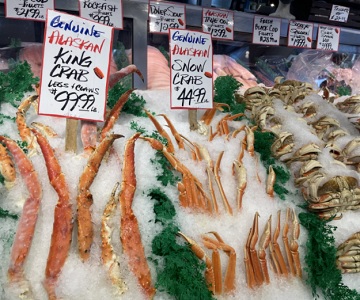
Trade war, Covid and now Ukraine invasion eat into Alaska seafood sales
First a trade war, then a battle against an infectious virus and now a real war are all affecting Alaska seafood exports. Shipments to China fell from as high as 30% of Alaska’s total seafood export value in the 2010s to 20% in 2020. “The U.S.-China trade war has displaced $500 million of Alaska seafood,” And though people bought more seafood to prepare at home during the COVID-19 pandemic, sales to restaurants and food services fell by 70%, Woodrow said. The food service market “still hasn’t fully recovered.” The Alaska product at risk in Russia’s invasion of Ukraine is pink salmon roe. Eastern Europe is a major buyer of the product, he said. “It’s a regional preference.” Alaska in 2021 shipped to Ukraine about $20 million of pink salmon roe,,, >click to read< 11:37
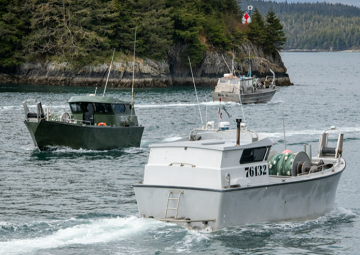
Prince William Sound harvest tops 67M salmon
Commercial harvesters wished they could have had more fishing time at the beginning of the season, but by the end of the season it certainly wasn’t a disaster, said Chelsea Haisman, executive director of Cordova District Fishermen United. “Overall, we are very happy with the way the seine season went,” she said. “Pink catches were very high. We are grateful and hoping for a strong finish with the cohos.” Still, the same amount of fish early on in the season holds much higher value, said Haisman, echoing the refrain of gillnetters who did not get openers for the famed Copper River sockeye salmon early on in the season when prices were higher. “Especially considering we exceeded the (Alaska Department of) Fish and Game in-river goal by over 100,000 fish,” she said. “We lost economic opportunity for the community.” >click to read< 18:14
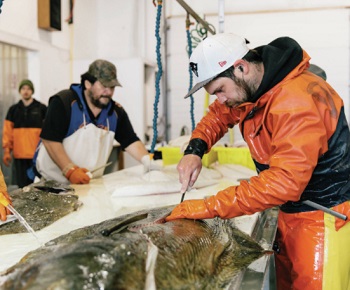
Some bright spots for high-value salmon, halibut in 2021
Following the trend of the last several years, the salmon forecast for the 2021 salmon season in Bristol Bay looks positive. The Alaska Department of Fish and Game is forecasting a total return of about 51 million sockeye salmon, with an inshore run of about 50 million. That’s about 6 percent better than the average for the last decade and 45 percent greater than the long-term average.,, Halibut outlook – Stock numbers in the Pacific halibut fishery are overall still declining, but there are individual bright spots in some regions. >click to read< 10:43
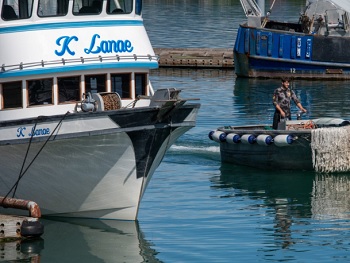
Humpy harvest in PWS surges to exceed 12M fish
Harvests of over 9 million pink salmon over the past week have pushed Alaska’s yearly total to over 25 million fish, including upwards of 12 million humpies caught in Prince William Sound. Alaska Department of Fish and Game finfish area management biologists in Cordova said the cumulative pink salmon harvest in the Sound through Aug. 1 alone was estimated at 10.5 million common property fish and 1.5 cost recovery fish. Preliminary commercial salmon harvest data compiled by ADF&G through Tuesday, Aug. 4, put the total commercial salmon harvest in Prince William Sound at 11.2 million fish, including 12.3 million pink, 1.9 million chum, 902,000 sockeye, 4,000 coho and 4,000 king salmon. >click to read< 19:03

Copper River fishermen gain another harvest
Commercial harvesters keen on those Copper River salmon got a fifth shot at those prized Chinooks and reds on Thursday, June 18, in a 12-hour opener announced by Alaska Department of Fish and Game officials in Cordova. Waters within the expanded Chinook salmon inside closure area were closed for the period. It has been, in no uncertain terms a real slow start, with several of those openers already cancelled because of a very slow run. Through Tuesday, June 16, a total of 1,665 deliveries to processors from four 12-hour openers in the Copper River had brought in some 5,751 kings, 71,370 sockeyes and 1,056 chums, a total of 78,177 fish. >click to read< 16:01
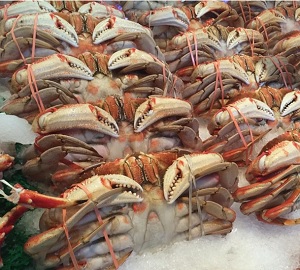
U.S. seafood exports dry up while cheap Russian crab is undercutting local industry
Fishermen in Alaska claim they have been caught up in Russia’s counter-sanctions, with Moscow’s ban on western food imports blocking sales to one of their key markets while allowing cheap Russian seafood to flood into the U.S. Russian seafood exports to the U.S. have jumped 69% since 2013 — the year before Russia blocked most imports of agricultural products from the U.S. and the EU in a tit-for-tat response to sanctions levelled against Russia after it annexed Crimea. >click to read< 08:11

Woodrow officially takes director’s helm at ASMI
Alaska’s seafood industry has a new captain at the helm of its main marketing agency. Jeremy Woodrow, previously the organization’s communications director, officially took over as executive director of he Alaska Seafood Marketing Institute this June.,,, Though he’s not in commercial fishing at present, he said his family has a long history in it. That connection has helped inform his involvement in the ever-changing fisheries of Alaska, and though ASMI stays out of fisheries policy, there are plenty of other tangles to sort out. >click to read<19:19
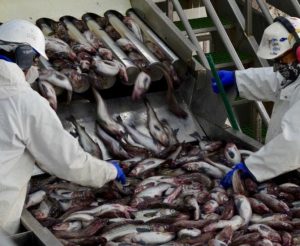
Ukrainian seafood buyers want to connect with Unalaska’s fisheries
International seafood buyers are scheduled to visit Unalaska this month, but they don’t hail from a massive importer like China or Japan. They’re coming from Ukraine — a once-modest market for Alaska fish that’s slowly reemerging after political upheaval and economic crisis. In 2013, Ukraine spent $105 million on American seafood — a record for the Eastern European nation that loves hake, pollock and salmon roe. But two years later, those imports had plummeted almost 70 percent as the Ukrainian government was overthrown and parts of its land occupied by Russia. >click to read<21:22
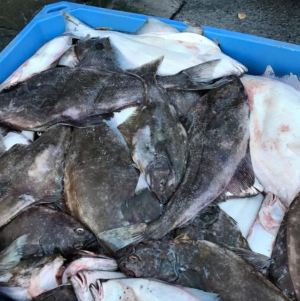
Halibut trash
Only in Alaska, which likes to claim title to the world’s “best-managed fisheries,” would halibut now retailing at prices in excess of $20 per pound be ground into fish meal to feed animals, shrimp and maybe even farmed salmon – the bane of Alaska commercial fishermen. Photos of halibut and other, trawl-caught bottomfish headed for the grinder emerged from Kodiak this weekend as Alaska fishermen started into a fishing season where the targeted harvest of halibut by both commercial fishermen and anglers has been seriously restricted because of conservation concerns. >click to read<18:20
Fish bucks flow far beyond AK; dock prices over a decade – This is Fish Radio.
 What is likely the most comprehensive report ever done on Alaska’s seafood industry was compiled this year by the McDowell Group in Juneau for the Alaska Seafood Marketing Institute. more@fishradio 11:22
What is likely the most comprehensive report ever done on Alaska’s seafood industry was compiled this year by the McDowell Group in Juneau for the Alaska Seafood Marketing Institute. more@fishradio 11:22
Alaska black cod fishery completes 2nd annual audit for RFM certification
 The Alaska black cod/sablefish fishery has completed the 2nd Annual Audit of the Responsible Fisheries Management (RFM) Certification. The objective of the audit is to monitor any changes since the previous assessment. No non-conformances were issued or are active for this fishery. more@fis 09:19
The Alaska black cod/sablefish fishery has completed the 2nd Annual Audit of the Responsible Fisheries Management (RFM) Certification. The objective of the audit is to monitor any changes since the previous assessment. No non-conformances were issued or are active for this fishery. more@fis 09:19
Governor Sean Parnell announces appointments to Alaska Seafood Marketing Institute ASMI board
 Parnell reappointed Jack Schultheis and Kevin Adams, and appointed Amy Humphreys to the Alaska Seafood Marketing Institute (ASMI) Board of Directors. The institute promotes Alaskan seafood and develops market-oriented quality specifications. more@adn 05:04
Parnell reappointed Jack Schultheis and Kevin Adams, and appointed Amy Humphreys to the Alaska Seafood Marketing Institute (ASMI) Board of Directors. The institute promotes Alaskan seafood and develops market-oriented quality specifications. more@adn 05:04United Fishermen of Alaska At-Large board member Kevin Adams elected as Alaska Seafood Marketing Institute Chair
 The United Fishermen of Alaska (UFA), the largest statewide commercial fishing industry trade association representing 36 member organizations, is pleased to announce the selection of Mr. Kevin Adams as Chairman of the Alaska Seafood Marketing Institute (ASMI) Board of Directors. This is the first time a commercial fisherman has held this position in over a decade. continued @ ADN.com
The United Fishermen of Alaska (UFA), the largest statewide commercial fishing industry trade association representing 36 member organizations, is pleased to announce the selection of Mr. Kevin Adams as Chairman of the Alaska Seafood Marketing Institute (ASMI) Board of Directors. This is the first time a commercial fisherman has held this position in over a decade. continued @ ADN.com
Alaska fishermen reaffirm Responsible Fishery Management (RFM) support
04 March, 2013 – The Alaska Seafood Marketing Institute released a resolution this week supporting the Alaska Department of Fish and Game’s decision to withdraw from the Marine Stewardship Council (MSC)’s process for certification. Read more
From the Deckboss – A salmon summit in Seattle
 For a long while, Alaska and the MSC seemed to be happy partners.
For a long while, Alaska and the MSC seemed to be happy partners.
In recent years, however, many players in the Alaska seafood industry have become disenchanted with the MSC, for a variety of reasons.
This also goes for state officials, who apparently aren’t too enthused about current efforts to keep MSC certification going.
A Seattle-based fishing group, the Purse Seine Vessel Owners’ Association, is seeking renewal of the MSC label on behalf of seven Alaska salmon processors led by Sitka-based Silver Bay Seafoods.
Fiscal cliff debate threatens ASMI int’l marketing budget
Congressional spending cuts could smack the Alaska Seafood Marketing Institute with a 40 percent reduction in future federal “Market Access Program” grants that provided more than half of the Alaska Seafood Marketing Institute. “The ‘Farm Bill,’ especially the MAP program, is in the bull’s eye, period. There is no doubt about that,” warned Naresh Shrestha, ASMI’s chief financial officer, during the institute’s “all hands” meeting in Seattle, Nov. 28 to 30. Read more: http://www.alaskajournal.com/Alaska-Journal-of-Commerce/December-Issue-3-2012/Fiscal-cliff-debate-threatens-ASMI-intl-marketing-budget/#ixzz2F9OkYZD0
Kwik’Pak Fisheries Attain Alaska RFM Chain of Custody
The Alaska Seafood Marketing Institute (ASMI) has announced that Kwik’Pak Fisheries LLC. has successfully met the requirements of the FAO-Based Responsible Fisheries Management (RFM) Chain of Custody Certification.
Kwik’Pak Fisheries joins Triad Fisheries Ltd, Glacier Fish Company, LLC, Seafood Producers Cooperative, Icicle Seafoods, Inc., Ocean Beauty Seafoods, LLC,, Canadian Fishing Company and Peter Pan Seafoods, Inc. in attaining Chain of Custody to the RFM certification. http://fis.com/fis/techno/newtechno.asp?l=e&id=56418






